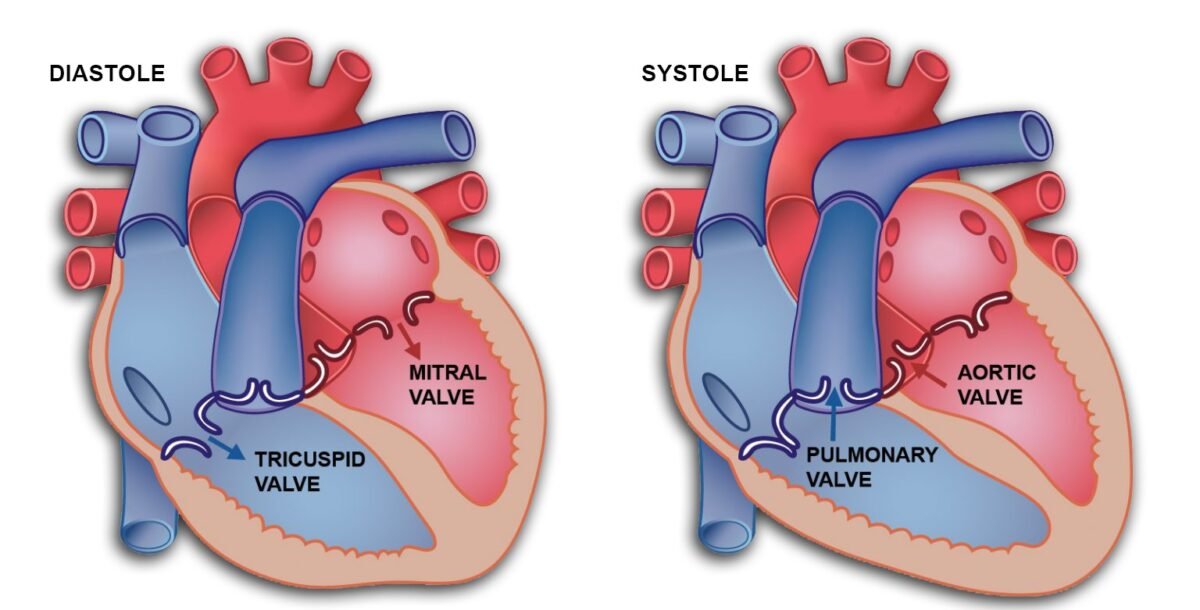Aortic Valve Repair vs. Replacement: How Do They Differ?

Aortic valve repair and aortic valve replacement are two surgical procedures used to treat aortic valve disease, a condition where the valve between the heart and the aorta does not function properly. These procedures are designed to improve blood flow from the heart to the rest of the body, relieve symptoms, and prevent complications such as heart failure.
Aortic valve repair involves fixing the existing valve, while aortic valve replacement involves removing the damaged valve and replacing it with a mechanical or biological one. The choice between repair and replacement depends on factors such as the severity of the disease, the patient’s age, and overall health.
Understanding the differences between aortic valve repair and replacement, the available treatments, and what to expect can help patients make informed decisions about their care.
What is Aortic Valve Repair?
Aortic valve repair is a surgical procedure that fixes the malfunctioning aortic valve without replacing it. It is often preferred when the valve’s structure can be preserved.
Reflecting on these advantages, one of Dr. Dinesh’s patients shares, “After my aortic valve repair, I felt like a new person. The surgery was minimally invasive, and I was back on my feet much sooner than I expected. The team here made me feel so comfortable, and I’m thrilled with the outcome!”
What Are the Techniques for Aortic Valve Repair?
There are several aortic valve repair techniques used to treat different types of valve defects:
- Annuloplasty: This technique involves tightening or reinforcing the ring around the valve (annulus) to ensure the valve closes properly.
- Leaflet Repair: This technique focuses on reshaping or trimming the valve leaflets so that they close tightly, preventing the backflow of the blood.
- Commissurotomy: This technique is used to separate fused valve leaflets, often due to a condition called stenosis, where the valve becomes stiff or narrow.
Note: These aortic heart valve repair techniques are highly effective in treating various valve issues, especially when the valve is not heavily calcified or when preserving the natural valve is a priority.
Who is a Candidate for Aortic Valve Repair?
Aortic valve repair indications include cases where the valve is structurally intact but does not function properly due to issues such as regurgitation (leakage) or minor defects that can be corrected surgically. Younger patients or those with less extensive valve damage are often ideal candidates for repair.
Dr. Dinesh Mittal emphasises, “Choosing the right approach for valve repair or replacement is essential. We always strive to tailor the treatment to each patient’s specific needs, ensuring the best possible outcome and quality of life.”
What is Aortic Valve Replacement?
When aortic valve repair is not feasible, aortic valve replacement becomes the necessary course of action. This procedure involves removing the damaged valve and replacing it with a mechanical or biological (tissue) valve.
Another of Dr. Dinesh’s patients recounts, “I had my aortic valve replaced with a biological valve, and the difference has been life-changing. The recovery was tough, but the medical team’s expertise made all the difference. Now, I have a much better quality of life.”
How is Aortic Valve Replacement Surgery Performed?
Aortic valve replacement surgery is a major operation that can be performed using traditional open-heart surgery or minimally invasive techniques. The choice of procedure depends on the patient’s health, the surgeon’s expertise, and the valve’s specific condition.
- Mechanical Valves: Made from durable materials, these valves can last a lifetime but require lifelong anticoagulation therapy to prevent blood clots.
- Biological Valves: Made from animal tissue, these valves do not require long-term use of blood thinners but may need to be replaced after 10-20 years.
Who is Considered an Ideal Candidate for Aortic Valve Replacement Surgery?
Significant Aortic Valve Disease: Patients with severe aortic stenosis (narrowing of the valve) or aortic regurgitation (leakage of the valve) are considered first for aortic valve replacement surgery.
Severe Symptoms: Patients who experience symptoms like chest pain, shortness of breath, fainting, or heart failure due to aortic valve disease.
Assessment of Disease Severity: Individuals with severe valve disease confirmed through imaging tests, such as echocardiograms.
Age and Overall Health: As we all know, younger, healthier patients are often ideal candidates, but older patients can also benefit if their overall health is good and they have significant symptoms.
Active Lifestyle: Surgery may benefit patients who wish to maintain or return to an active lifestyle, improving symptoms and quality of life.
How Do You Choose Between Aortic Valve Repair and Replacement?
The decision between aortic valve repair and replacement depends on several factors:
- Severity of Valve Damage: If the valve can be preserved, repair is often preferred.
- Patient’s Age and Health: Younger patients may benefit more from valve repair, while older patients might require replacement.
- Presence of Other Heart Conditions: Sometimes, other existing heart conditions might necessitate a specific type of procedure.
What is the Cost of Aortic Valve Replacement in India?
The cost of aortic valve replacement in India varies significantly depending on the type of valve used, the complexity of the surgery, and the hospital. In India, aortic valve repair treatment and replacement surgeries are often more affordable compared to many Western countries, making it a popular destination for medical tourism. The cost can range from INR 3,00,000 to INR 7,00,000 (approximately USD 4,000 to USD 10,000), depending on various factors, including the choice of valve and the complexity of the case.
Conclusion
Understanding the options for aortic valve repair and aortic valve replacement is crucial for patients facing heart valve issues. While both procedures are effective, the choice between them depends on various factors, including the patient’s specific condition, age, and overall health. With the advancements in surgical techniques and the availability of affordable treatment options, particularly in places like India, patients have better chances than ever to restore their heart health and improve their quality of life.
FAQs
-
How long is the recovery period after aortic valve repair or replacement?
Recovery typically takes 6 to 8 weeks for minimally invasive surgery, while it may take 2 to 3 months for open-heart surgery.
-
Are there any lifestyle changes required after aortic valve surgery?
Yes, patients often need to adopt a healthy diet, exercise regularly, avoid smoking, and adhere to medication regimens.
-
What are the potential risks or complications associated with aortic valve surgery?
Risks include infection, bleeding, blood clots, and potential valve dysfunction.
-
Can aortic valve disease be managed without surgery?
In some cases, medications and lifestyle changes can manage symptoms, but surgery may be required for severe conditions.
-
Can you live with aortic stenosis without surgery?
Yes, you can live with aortic stenosis without surgery, but it requires careful management and monitoring.
Explore more blogs: How Does Aortic Intervention Help Treat Aortic Aneurysms?
